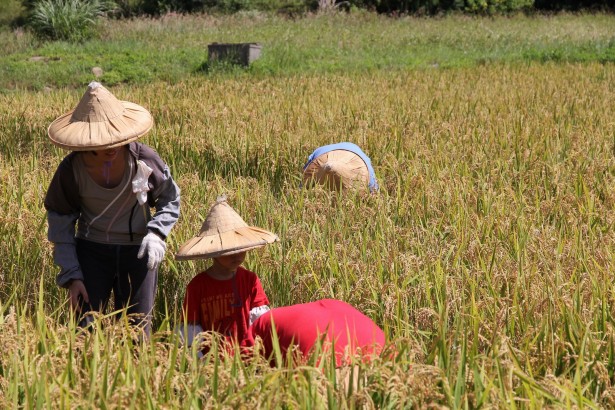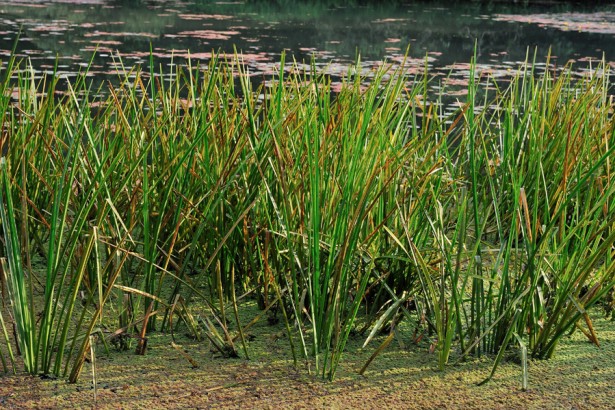[2014 key report on Myanmar transition] Special introduction
Share + 1 Tweet Email
This is the first time in Taiwan's media industry! Environmental groups sponsor independent media for cross-border agricultural coverage. "upstream and downstream News Bazaar", funded by the "Foundation for Environmental Education", sent senior journalists Wang Wenhao and Peng Yurong to Myanmar to cover news for nearly a month, in addition to "Rangoon," the largest city in Myanmar. They also went to Myanmar's rural areas, where international media rarely went deep into, to understand the challenges and potential of Myanmar's agricultural development on the spot, and try to find opportunities for Taiwan to cooperate actively in the process of Myanmar's transformation.
Why does Taiwan want to know Burma?
For the first time in 64 years, the authorities of Taiwan and Myanmar broke the situation of not communicating with each other and formally signed the Memorandum of understanding on Taiwan-Myanmar Agricultural Cooperation, taking the first step in the official exchange of visits between the two sides.
Since Myanmar moved to recognize the people's Republic of China on June 8, 1950, the Republic of China and Burmese officials on Taiwan have been out of touch with each other, and Myanmar has always maintained close relations with China.
Until the Burmese government carried out reform and opening up more than two years ago, Western countries lifted economic sanctions on Myanmar one by one, and dignitaries and enterprises from Japan, South Korea, the United States and European countries visited Myanmar one after another, on the one hand, they were concerned about Myanmar's political transformation and strategically besieged China. On the other hand, they are also looking for investment opportunities in Myanmar.
Both the World Bank and the Asian Development Bank have pointed out that agriculture is the key to Myanmar's pursuit of economic growth. Rogers, an American investment expert whose words and deeds are the norm for investors, is more optimistic about Myanmar's future growth momentum. Myanmar is also one of the few countries in the world with an economic growth rate of more than 7%.
The relationship between Taiwan and Myanmar has also quietly melted and broken the ice in this wave of "global madness Burma".
This year, Myanmar plays an important role as the rotating chairman of the Association of Southeast Asian Nations (ASEAN). For Taiwan, which is eager to integrate into the regional economy of Southeast Asia, it is necessary to re-recognize the seemingly close but unfamiliar country of Myanmar ─.
On April 1 this year, Chen Baoji, chairman of the Council of Agriculture, went to Naypyidaw, the capital of Myanmar, and signed a "Memorandum of understanding on Taiwan-Myanmar Agricultural Cooperation" with Myint Hlaing, Minister of Agriculture, Irrigation and Water Resources (Minister for Agriculture and Irrigation) of Myanmar, in the presence of officials from Myanmar's Ministry of Foreign Affairs, covering technical cooperation, exchange of visits of personnel, technical training and other projects.
A new understanding of Myanmar from the perspective of agriculture, using agriculture as a way of international participation, is the answer that upstream and downstream are trying to find through interviews.
[2014 Myanmar transition key report] introduction to each title / introduction
The information brought back from Myanmar is very rich. Upstream and downstream special websites have been specially made, and we have tried to add the function of dynamic reading for the first time. Please go to [2014 Myanmar transition key report] for a complete reading. The following is a guide to each title / introduction:
00. Preface Myanmar, the New focus of the World
Both the World Bank and the Asian Development Bank have pointed out that agriculture is the key to Myanmar's pursuit of economic growth. Rogers, an American investment expert whose words and deeds are the norm for investors, is more optimistic about Myanmar's future growth momentum. Myanmar is also one of the few countries in the world with an economic growth rate of more than 7%. The relationship between Taiwan and Myanmar has also quietly melted and broken the ice in this wave of "global madness Burma".
01. Burma, how are you?
When I first arrived in Yangon, Myanmar, I was most impressed by the congested traffic and the habit of driving on the right side of the driveway, miraculously driving both right and left at the same time.
02. Underfed farmers under the rice kingdom
"isn't it contradictory that Myanmar wants to compete with the world's largest rice exporter, but nearly 40% of its farmers live below the poverty line without enough to eat?" Dr. Omar, co-ordinator of the Myanmar Food Safety work Organization, talked about the future of Burmese agriculture.
03. The Burmese Dream of Taiwan Rice Farmers
Lin Hsu-yang, a rice farmer from Yunlin, and Weng Liangcai, a rice farmer from Wufeng, Taichung, were invited by Taiwan businessmen who invested in rice production in Myanmar to go to "Pathein", the third largest city in Myanmar, to provide technical guidance to grow rice, hoping to improve the production mode of Taiwan's rice industry.
04. Pig raising in Burma and Taiwan
"everything you see in the pig farm now has the shadow of Taiwan," says Yan Longfang, a young Chinese who usually raises pigs in Yangon, Myanmar. Knowing that we are journalists from Taiwan, we break the usual practice of not opening up visits to the outside world and warmly welcome …
05. Taiwan farmers' seedlings make snake kisses no longer a nightmare for Burmese farmers
In rural SamaLauk, more than 60 kilometers from the western suburbs of Yangon, Myanmar, the Nongyou Seedling Company from Taiwan has donated money to set up a farmers' hospital. Over the past 13 years, it has treated more than 800 farmers who have been bitten by poisonous snakes and delivered countless rural women who are in labor and dystocia.
06. Myanmar Metta helps poor farmers invest in organic agriculture
To be honest, because of the privilege of coming here and visiting Myanmar's largest grass-roots NGO, "METTA", as well as rural areas and farmers tutored by METTA, I have some hope again because of my pessimism about Myanmar's rapid reform and opening up and full embrace of economic liberalization.
07. An exclusive interview with Myanmar Food Safety working Group by NGO Mutual Assistance and Cooperation Network
In order to have a broad understanding of the current situation of agriculture and farmers in Myanmar, we interviewed the Burmese food safety working organization that has linked and coordinated various agricultural NGO and ethnic minorities in Myanmar for many years. Dr. Omar, the co-ordinator, introduced the role of FSWG and Burmese agriculture.
08. The sadness of Tomato on Inlay Lake Lake
Inle Lake is the best known tourist attraction in Myanmar. Its status is like Sun Moon Lake to Taiwan, but its area is much larger than Sun Moon Lake. Floating island agriculture on Lake Inlay is also the largest hydroponic agricultural area in the world. Farmers spread mud on water plants to form floating islands to grow tomatoes and melons.
09. Shopping in the Market in Myanmar (part I)
In this dry season, vegetables are still very abundant. All kinds of eggplant, cauliflower, pumpkin, sweet potato, cabbage, okra, kale, cabbage (but with very thick leaves), cucumber, pea pod, asparagus, towel gourd, bergamot, beetroot, corn, balsam pear, pepper, broad bean, leek, onion and ginger, taro, mint leaves, bamboo shoots, nine-story pagoda, radish, Luowangzi can be seen.
10. Shopping in the Market in Myanmar (part two)
According to the Myanmar Ministry of Commerce, Myanmar's mango exports have exceeded US $10 million in recent years, of which the most popular is the Sen Ta Lone variety. If mango is the king of fruit, Sen Ta Lone can be said to be the king of kings.
11. Burmese taste
Looking at the blue from the small window, and the distant port city of Yangon, there is not much unknown and anxiety in my heart. On the contrary, I think of the familiar taste of living in Zhonghe Huaxin Street in New Taipei City in the past three years, and think of Mama Gong's fish soup noodles (mohinga) and Golden Peacock's Burmese curry (h'in) with wild vegetables cold dishes.
twelve。 Who will come to dinner and be a guest at the regular people's home in Myanmar?
What do ordinary Burmese people eat at home? Under a tossing opportunity, we were invited to eat at the home of our friend Soe in Dalah on the other side of the Irrawaddy River in Yangon. Soe used to be a tricycle and went to work in Singapore after studying English hard.
Burmese small archives
Myanmar covers an area of 676577 square kilometers, equivalent to 19 Taiwan, with a population of about 60 million, growing at an annual rate of 1.9 per cent. The average GDP per person is only $715; 26% of the population lives in poverty.
[2014 Myanmar transition key report] Special website, please click here
Share + 1 Tweet Email
- Prev

"Li Shan Shuk" summer harvesting and transplanting activities, start to sign up!
"Li Shan Shuk" summer harvesting and transplanting activities, start to sign up!
- Next

Taiwan Fushan Botanical Garden: building a good ecological environment based on the conceptual planning of protecting environmental tree specimens
The monthly plant information service of Fushan Botanical Garden is online.
Related
- A course of planting techniques and methods on how to grow carrots
- How to plant the latest tulips?
- Is it better to pick tea in the morning or in the afternoon? When is the best time for tea to be picked? what is the third or fifth tea?
- Launch Yuanxiao Happy combination Haocha + Tea Yuan healthy Taste
- Penghu Tourism "Fireworks 20 Parade with You"
- 2022 West Lake Happiness holds "Digital Revitalization Voucher" and draws iphone13 and laptop.
- Banqiao Fuzhou social houses are designed to change start-up combined with police elimination to create a safe and livable environment
- The convenient measure of "mechanical weeding" in Xinbei has been abused and the Agriculture Bureau has imposed heavy penalties on the illegal land consolidation.
- Changgeng University Joins Hands with Four Memory Factories to Rescue Memory Talent Shortage
- The list of Taiwan's top 100 MVP managers is listed by the Director-General of the Farmers' Association of Sanxia District.

